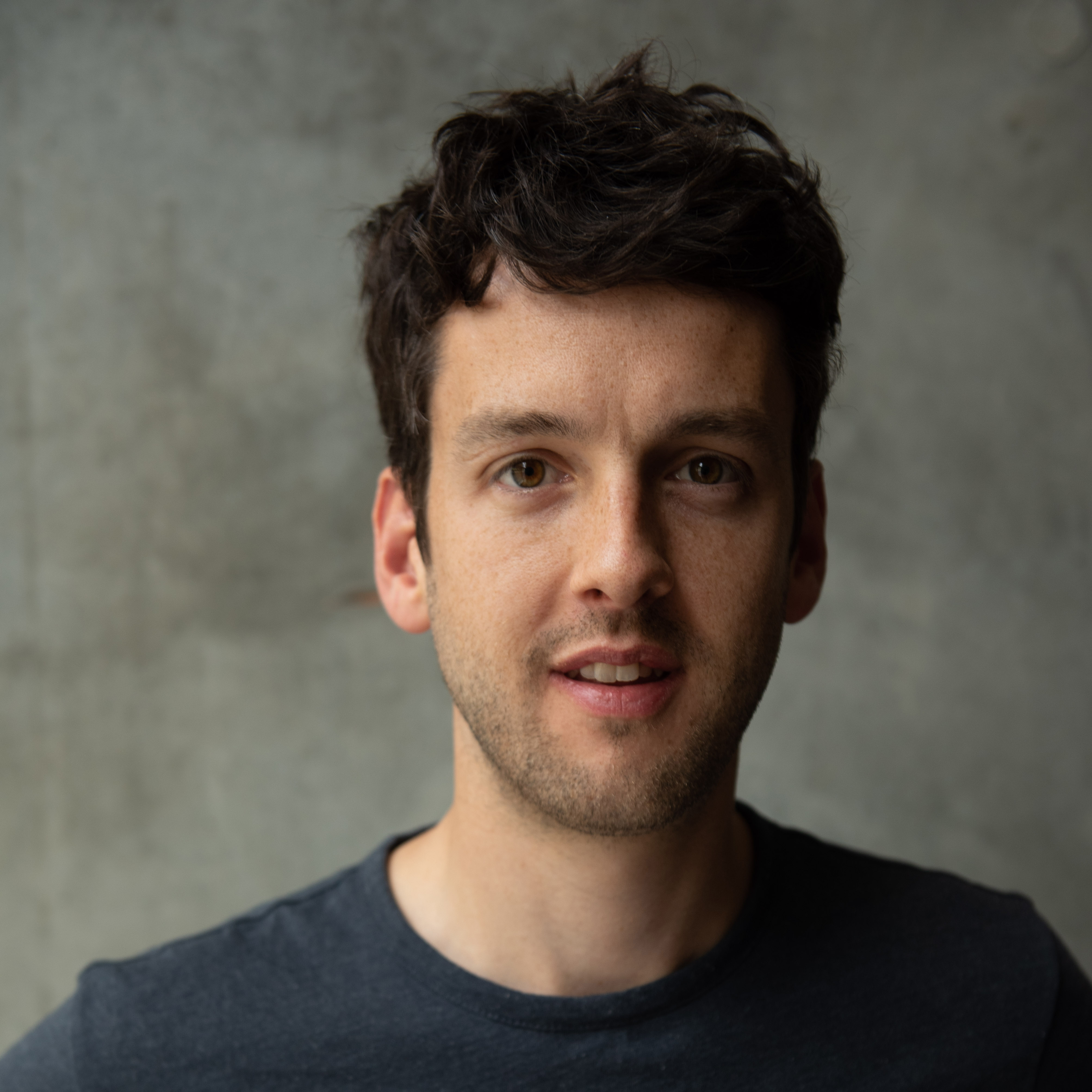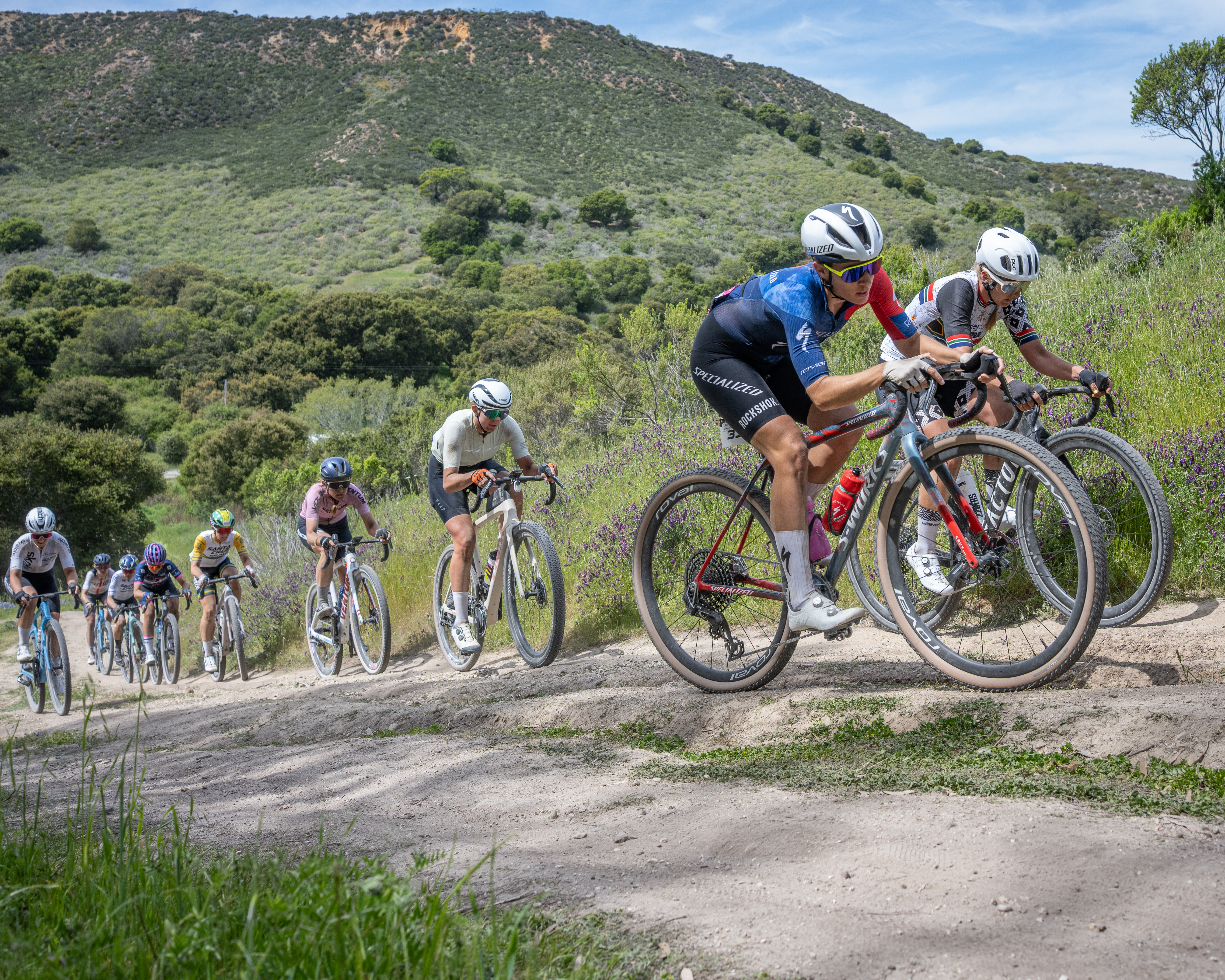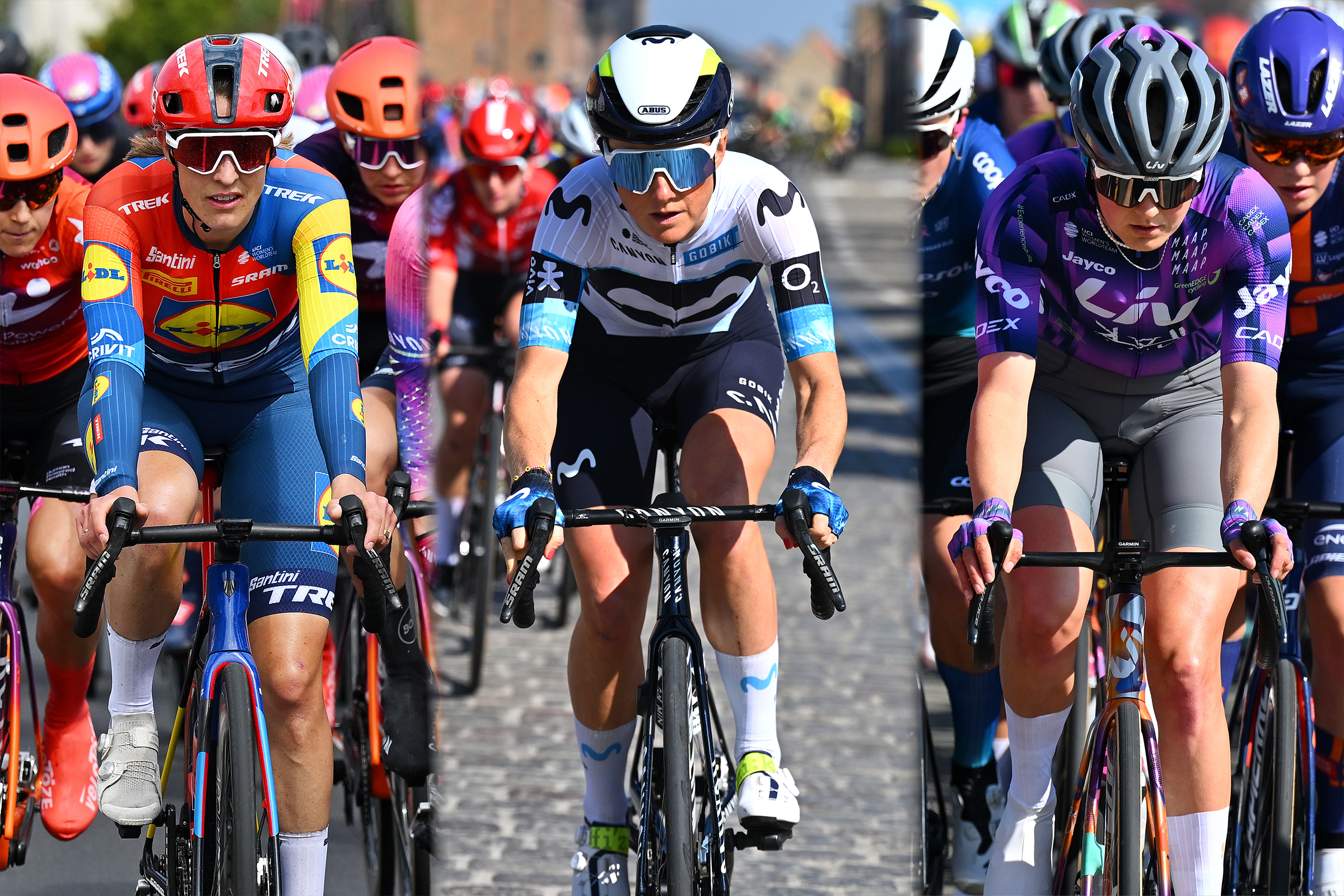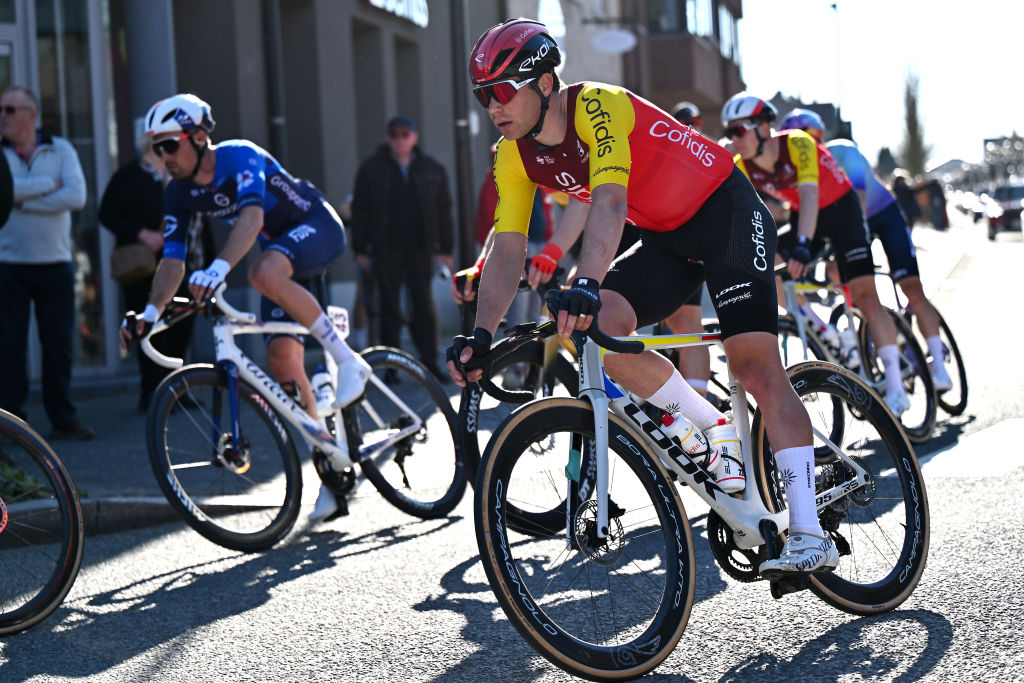Gent-Wevelgem preview: Can Deceuninck-QuickStep be stopped?
Sagan, Viviani, Van Avermaet and Gaviria all headline
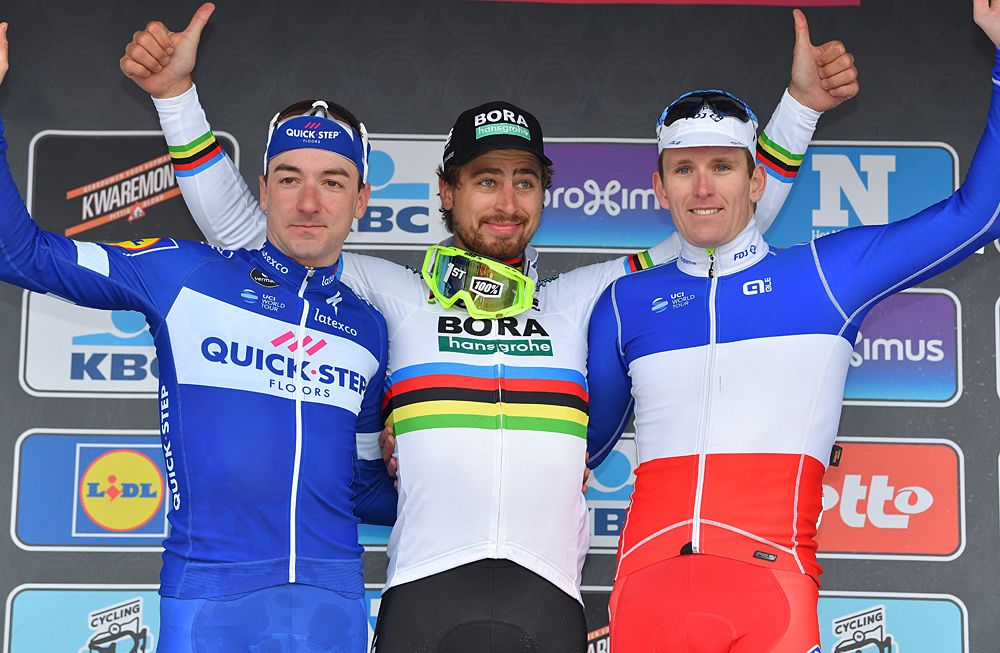
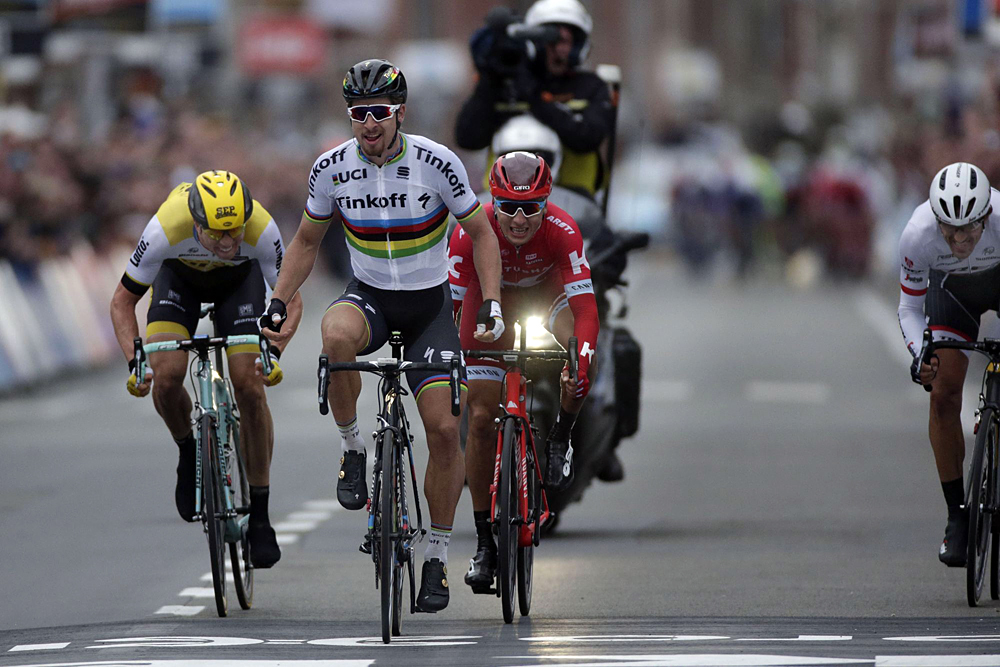
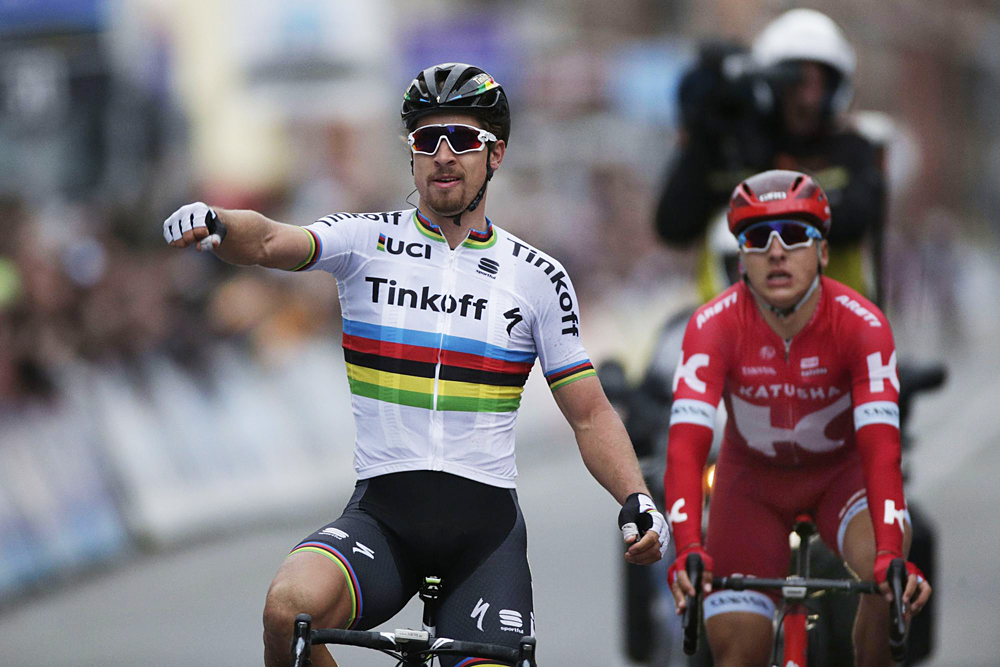
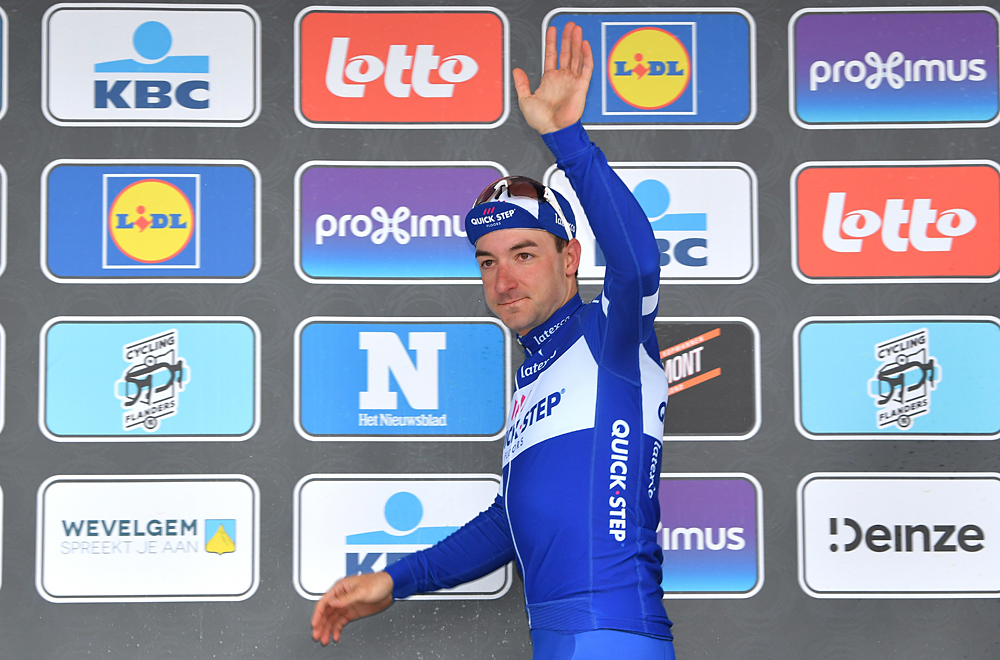

The cobbled Classics change in tone on Sunday, with Gent-Wevelgem taking the riders away from the Flemish Ardennes that formed the playground for E3 BinckBank on Friday and will do so again at Dwars door Vlaanderen and the Tour of Flanders next week. The tone of domination from the Decueninck-QuickStep team is harder to shift, though, and Patrick Lefevere’s men once again line up with the keys to the race.
In contrast to the other race’s in Flemish cycling’s Holy Week, Gent-Wevelgem eschews the Flemish Ardennes and instead heads out towards the North Sea coast before coming down to take on the hills in the Heuvelland area west of Ypres, by the French border.
Wind affects Gent-Wevelgem more consistently than any of the spring races, with the passage up near the coast a perennial danger zone, even if the finish is a long way away. Moderate breeze is expected on Sunday - far from the gale-force conditions of 2015 but still in a southeasterly direction that could cause trouble. After that, it’s all about the Kemmelberg, with two ascents of the fearsome cobbled climb the highlights on a menu of 10 hills. The gravel tracks – or plugstreets – return in between the two ascents of the Kemmelberg but have so far failed to have any discernible impact on proceedings since their introduction two years ago.
The final ascent of the Kemmelberg invariably sees the race explode and spat out in pieces down the other side. However, with a 34-kilometer run-in to the finish in Wevelgem, there’s enough ground for groups to reform and for the fast finishers to come into contention.
Deceuninck-QuickStep have won all but one of the WorldTour one-day races this year and have options for all eventualities on Sunday. Elia Viviani has been one of the top sprinters in the past couple of years and can handle climbs. Indeed, he was runner-up last year and is out for redemption after that heartbreak. In the event of a more aggressive, selective finale, QuickStep have E3 and Omloop winner Zdenek Stybar, along with Philippe Gilbert and Yves Lampaert.
Though question marks linger after E3, Peter Sagan is still perhaps the outright favourite, having won this race a record-equalling three times. What’s more, he’s done it in three different scenarios – solo in 2013, from a group of four in 2016, and from a group of 20 in 2018. Gent-Wevelgem is a race that hangs in the balance, but Sagan seemingly has every eventuality covered.
The route
Despite its name, Gent-Wevelgem doesn’t actually start in Gent, but in Deinze, some 20km west. The first 135km or so sees the race makes its way northwest towards the North Sea coast before heading south near the French border towards Ypres. This phase is pan-flat, but it’s where the wind can wreak its havoc, notably near the coast and exposed areas such as De Moeren – a key flashpoint. The wind is set to blow from the northeast, making it a cross-tailwind, perfect for echelons if it’s blowing with any strength.
The hellingen – or hills – start with just over 110km remaining. This year there are 10 in total, one fewer than last year. The first, over the French border, is the Catsberg, and it’s quickly followed by the Kokereelberg, Vert Mont, and Côte du Ravel Put, and Côte de la Blanchisserie. These first five a grouped together and will begin the softening up process.
A short respite takes the riders towards the Kemmelberg for the first time. As in the finale, it first appears preceded by the Baneberg, a short but steep and twisting climb. The Kemmelberg itself is brutal, with rough cobblestones and gradients well into the double digits. The descent is hair-raising, too, and leads to the third ascent in quick succession: Monteberg.
After that trio come the so-called plugstreets, the gravel tracks that snake through old World War battlefields. Many questioned their introduction two years ago – Patrick Lefevere famously said the old organisers would be turning in their graves – but, appearing more than 50km from the finish, they have so far not had much impact on the racing itself. The same trio of gravel sectors appear for the third year in a row, the first being 2100m long with an exposed uphill section, the second – which passes the Christmas Truce memorial – 1300m on narrow sheltered tracks, and the third – nicknamed Catacombs – a short 600m blast through the trees.
From there, the riders make their way on narrow twisting roads back towards the Baneberg and Kemmelberg. This ascent of the Kemmelberg is always the critical juncture of the race. It’s the final climb and, even if an almost full peloton reaches the bottom, the race will be in pieces over the top, with all the favourites going full gas. The riders will be spat out in small groups onto the main road at the bottom of the descent, and it’s there where the race hangs in the balance.
With 34 largely flat kilometers to the finish, it all depends how exacting the day has been and how much of an advantage the aggressors on the Kemmelberg have been able to establish. If the right group gets a gap, it can stay away, however small. As always, it depends on the composition and tactics behind as the small groups reform into larger units. Though an initial headwind might scupper the attackers, it’s set to turn to a crosswind once through Ypres almost all the way to Wevelgem.
Last year saw a large group contest a sprint finish, while the previous two years have seen groups of two and four arrive, respectively. It really can go either way.
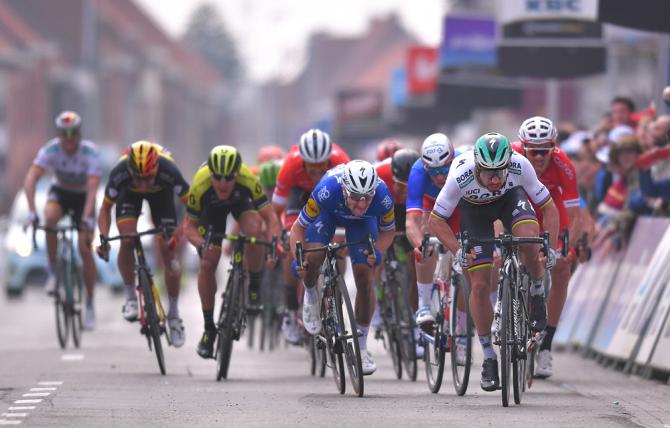
Peter Sagan and Elia Viviani sprint for the line at Gent-Wevelgem 2018 (Getty Images)
The contenders
As always, there is a decent field of sprinters on the start line. Their 250km in the saddle may be futile, the result taken out of their hands, but equally, they could walk away with one of the most prestigious Classics prizes. Dylan Groenewegen (Jumbo-Visma) is the big absentee, having enjoyed a successful start to the season and having signaled his form and aptitude for riding in this area with victory at Driedaagse De Panne on Wednesday.
Elia Viviani (Deceuninck-QuickStep), then, is perhaps the de facto favourite among the pure sprinters. The Italian famously broke down in tears beyond the finish line last year after placing second behind Peter Sagan (Bora-Hansgrohe), feeling he’d let a golden opportunity slip through his fingers. He won’t want to waste another one. The question mark for him is his team. All-conquering this spring, QuickStep have no shortage of options, and a raft of big-names who’d be more interested in a selective affair, such as E3 winner Zdenek Stybar, Philippe Gilbert, and Yves Lampaert. They won’t be waiting for Viviani on the Kemmelberg but he’ll become their main man should he end up in a sizeable group heading to the finish.
Other fast finishers include the UAE Team Emirates duo of Fernando Gaviria and Alexander Kristoff. The former has struggled to make the Classics breakthrough many expected, but has the finishing speed and is preferred by team management as their Plan A.
There are plenty more fast finishers who have more of a rounded, Classics-suited profile, such as Matteo Trentin (Mitchelton-Scott), who was in the top 10 at E3, former Milan-San Remo winner Arnaud Démare (Groupama-FDJ), and 2017 runner-up Jens Keukeleire (Lotto Soudal). Then there’s Sonny Colbrelli (Bahrain-Merida), Magus Cort (Astana), Edvald Boasson Hagen (Dimension Data), and Jens Debuscherre (Katusha-Alpecin). John Degenkolb leads the line for a Trek-Segafredo squad who badly need a result.
Peter Sagan (Bora-Hansgrohe) tops the lot, with a combination of punch and finishing kick that no one can match. He’s had more joy from this race than any other Classic, and has won from large groups as well as small. The only factor that could diminish his favourite status is his performance at E3, where he could not follow Greg Van Avermaet’s acceleration on the Tiegemberg. That was partly explained away by a mechanical issue but when asked if it was purely down to the mechanical or if he had bad legs, Sagan, who was sick earlier this month, said: “A bit of both.”
There are also plenty of thoroughbred Classics riders who’ll be relying on small groups contesting the finish. 2017 champion Van Avermaet is one, and looked strong at E3 after a disappointing Milan-San Remo. Wout Van Aert (Jumbo-Visma), Oliver Naesen (AG2R La Mondiale), Niki Terpstra (Direct Energie), Alberto Bettiol (EF Education First) and Tiesj Benoot (Lotto Soudal) are all likely to race aggressively.
One to watch – if not necessarily expect to win – is Mathieu van der Poel. The Dutch prodigy is riding his first cobbled Classics campaign after spending his early years focused on cyclo-cross and mountain bike, and his victory at the GP Denain last weekend was a sign he could well hit the ground running.
Get The Leadout Newsletter
The latest race content, interviews, features, reviews and expert buying guides, direct to your inbox!
Patrick is a freelance sports writer and editor. He’s an NCTJ-accredited journalist with a bachelor’s degree in modern languages (French and Spanish). Patrick worked full-time at Cyclingnews for eight years between 2015 and 2023, latterly as Deputy Editor.
Latest on Cyclingnews
-
Drawing a line in the gravel - Will anti-drafting rules create structure or friction in Life Time Grand Prix competitions?
Lauren De Crescenzo shares thoughts on enforcement and punishment for new regulations to make races 'more fair' -
Women's cycling's road captains – who are they, how important are they, and what makes a good one?
'If they're waiting for the car, it's too late' – we hear from the riders leading their teams and keeping cool in those split-decision moments -
Ronde van Limburg: Milan Fretin fends off rivals on teammate's bike to win chaotic bunch sprint
Cofidis secure fifth triumph of 2025 with local rider Fretin -
Giro d'Abruzzo: Late attack by Ivo Oliveira lands UAE Team Emirates-XRG back-to-back wins on stage 2
UAE celebrate 29th win of 2025 but Alessandro Covi cedes race lead to Filippo Fiorelli
